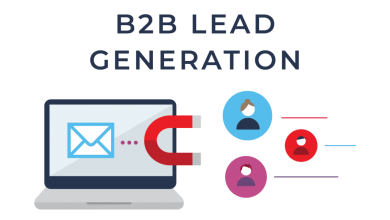What is Data as a Service in Cloud Computing

Whether you are an individual or an organization, it is essential to keep the data safe and secure. To make sure that things go the right way, all seeking safe storage exploits the option of using the cloud services. With the growing fame of cloud services, Data as a Service or DaaS is being used to help the users. It is an excellent tool for handling data integration, management, storage, and analytics. DaaS can improve the quality of running workloads, minimize time to insight, and maximize their data’s reliability and integrity.
Table of Contents
What does Data as a Service mean?
It is a data management strategy that exploits the cloud services to support data storage, integration, processing, and set up analytics services through a network connection.
DaaS is not much different from software as a service, or SaaS, another cloud computing strategy. It helps in delivering the various essential applications to the users using the network connection. It prevents the application from running locally on their respective devices. Suppose SaaS enables you to stay away from installing and managing the software locally. In that case, DaaS helps in outsourcing the data storage, integration, and processing of the operations to the cloud services.
SaaS has won the hearts of those who are concerned with safe data usage. In a decade-old history of SaaS, it has helped the users to a greater extent. On the other hand, DaaS is a growing concept that is becoming popular with every passing day. It is all because the generic cloud computing services in the early stages were not meant for taking care of the data workloads, but they only took care of hosting and primary data storage. In the initial days of the services, the processing of large data sets was hard to tackle online, especially when the bandwidth was limited.
We are now living in an era where the growth of low-cost cloud storage and bandwidth along with cloud-based platforms meant for fast, large-scale data management and processing has contributed to the popularity of DaaS.
How Can We Benefit From Daas?
Contrary to the on-premises data storage and management, DaaS offers a wide range of benefits in speed, reliability, and performance. These benefits include:
- It takes the least expected time to store and process data.
- Better functionality with DaaS workloads being less impacted by downtime and disruptions.
- More flexibility and scalability than the on-premises alternatives.
- Easy to optimize the costs according to the organizational resources.
- Auto maintenance and management by the DaaS providers.
- Little human effort is required to handle the data tool set up and management.
Limitations Of Data As A Service
It is hard to ignore the benefits of the DaaS, but at the same time, it brings along a set of problems that can transform into a massive challenge if not catered to in time. Here are the few limitations that are often reported.
Security limitations: DaaS requires an organizational setup to move the data to the cloud infrastructure and over the network. If the data exists on local, behind-the-firewall infrastructure, it can face security problems.
Extra compliance: For some organizations, there are compliance challenges in the case of sensitive data. The data can be integrated into the cloud, but the companies are subject to compliance requirements essential to finding the DaaS solutions.
Limited capabilities: Some of the DaaS platforms come with a limited number of tools. The users can exploit only those tools that are hosted on the DaaS platform.
Duration: The transfer time depends upon the size of the files. The larger the files, the more time they will take to get transferred. The frequency of sharing the data, the size of the data, and the bandwidth can directly or indirectly impact the transfer speed of the data to the cloud.
Using Data As A Service
It is encouraging for new users to switch to DaaS as an alternative, but it is still a unique solution. The process is easy to follow and simple in its application. This owes that DaaS removes much of the setup and preparation related to the on-premises data processing solution. Due to all these features and this ease, the company does not have to hire an additional workforce for the tasks.
If you want to work with DaaS, then here are the essential steps that you need to follow:
- Choose the DaaS solution that you feel is appropriate. Consider the factors like price, scalability, reliability, flexibility, and ease of integrating the DaaS with existing workflows.
- Create an account and then sign up for it.
- Move the data to the chosen DaaS service. The choice rests on the daily rate of transfer and the possible size of the files. The other factors include the speed of the network connection.
- You are ready to start using the DaaS platform for a swift transfer and netter data integration.
Conclusion
Unlike the on-premises data solutions, DaaS has a list of benefits for the data as a service. The users rating on the traditional data-related matters could not enjoy the benefits of easy setup, cost-optimization, reliability, and much more like they want with the DaaS.
Many companies have started resorting to Daas to ensure that the process happens speedily and in a simplified manner. Thus, it can get insights from the data that can help achieve better data integration and governance as an outcome. The companies get an edge over their respective competitors and streamline the internal operation with effective data governance and data integrity.
Follow Techwaver for more!


